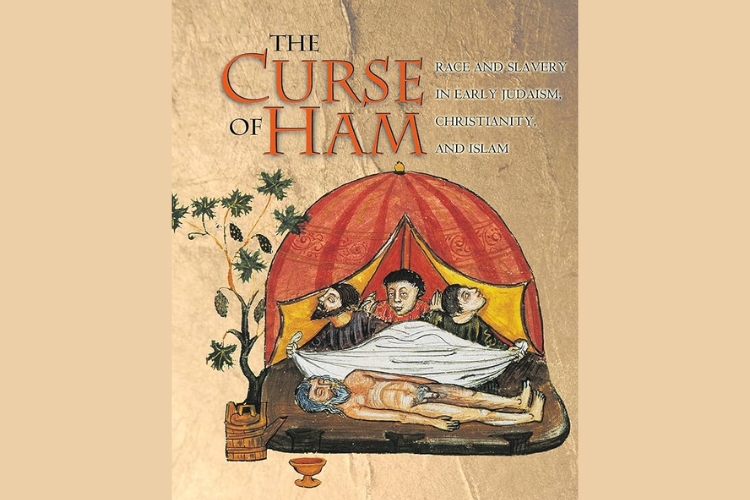The Bible has been a central text for millennia, providing guidance on a myriad of ethical and moral issues. Among these is the topic of slavery, an institution deeply embedded in the societies of antiquity.
In this blog post guide, we will explore the historical context and divine teachings of the Bible on slavery, examining the relevant passages from both the Old and New Testaments, the actions and words of Jesus Christ, the theological debates that have arisen, the perspectives of the early church, and how modern Christians reflect on these scriptures today.
Key Takeaways
- The Bible provides extensive details on the practice of slavery in ancient times, including its economic roles and legal regulations, particularly within Old Testament laws.
- Jesus Christ’s interactions with slavery in the New Testament include healing a centurion’s slave and using slaves as characters in his parables to impart spiritual lessons.
- Theological debates on slavery have seen both abolitionist and pro-slavery advocates use biblical texts to support their conflicting viewpoints, often citing the same passages for different purposes.
- The early church’s stance on slavery is reflected in the apostolic teachings, such as the Apostle Paul’s epistles, which address slavery within the context of Christian brotherhood and moral conduct.
- Modern reflections on biblical slavery involve discussions on the translation and interpretation of the Bible, with contemporary Christian views being shaped by historical understandings and current ethical considerations.
Biblical Foundations of Slavery

Old Testament Laws and Regulations
The Old Testament provides a complex framework of laws and regulations regarding slavery, reflecting the social and economic structures of ancient Near Eastern societies.
Laws such as those found in Exodus and Deuteronomy delineate various scenarios and stipulations for the treatment of slaves, including debt slavery, the rights of Hebrew slaves, and the treatment of foreign slaves.
Slavery in the Old Testament is often tied to economic necessity and social stratification. For instance, Hebrew slaves were to be released in the seventh year or during the Year of Jubilee, as prescribed in Leviticus 25:10. This release, however, came with certain conditions:
- Hebrew slaves were to be freed in the seventh year of service (Exodus 21:2).
- Upon release, they were to be provided with provisions (Deuteronomy 15:13-14).
- If a slave chose to remain with their master, a formal ceremony was conducted to mark this decision (Exodus 21:5-6).
The treatment of slaves was regulated to prevent abuse, with laws stipulating that masters who harmed their slaves were to be punished. This reflects a societal value of human life, even within the context of slavery.
The Old Testament’s approach to slavery was not monolithic but varied according to the circumstances and the individuals involved. It is important to understand these laws within their historical context, as they offer insight into the ancient world and its operations.
New Testament Perspectives
The New Testament offers a complex view of slavery, which is not directly addressed by Jesus but is discussed in various epistles. Pauline epistles, for instance, contain instructions to both slaves and masters, emphasizing mutual respect and the spiritual equality of all in Christ.
- The Gospels
- The Epistles
- The Book of Philemon
- Manumission
- 1 Peter
- The Book of Revelation
In the Gospels, slavery is often used metaphorically to describe spiritual bondage and the need for redemption. The Epistles, particularly those attributed to Paul, advise slaves to obey their earthly masters while also reminding masters that they, too, have a Master in heaven.
The New Testament reframes the concept of slavery, focusing on spiritual liberation and the inherent value of every individual before God.
The Book of Philemon is a unique case where Paul intercedes on behalf of a runaway slave, Onesimus, appealing to Christian brotherhood rather than legal rights. This personal letter highlights the transformative power of Christian love and the potential for social change within the early Christian communities.
Debt Slavery and Economic Roles
In the biblical era, debt slavery was a prevalent form of servitude, where individuals would sell themselves into slavery to settle debts. Unlike chattel slaves, who were often prisoners of war with no rights to redemption, debt slaves had the possibility of release after a period, typically six to seven years.
The economic instability of the time made debt slavery a necessary, albeit undesirable, option for many. Economic security was a significant concern, leading some to sell even their dependents into temporary slavery.
The Code of Hammurabi and Levitical laws reflect this practice, with stipulations on the treatment and duration of such servitude. For instance, Leviticus mandates that a debtor sold into slavery should not perform degrading labor but work akin to that of a hired servant.
The intersection of economic hardship and societal norms shaped the contours of debt slavery in biblical times, highlighting the complex relationship between poverty and servitude.
- Debt slaves sold themselves to pay off debts.
- Release typically occurred after six to seven years.
- Economic necessity drove individuals and families into temporary servitude.
- Biblical laws provided regulations on the treatment of debt slaves.
Jesus Christ’s Interactions with Slavery

Healing of the Centurion’s Slave
In the New Testament, the account of Jesus healing the centurion’s slave is a significant moment that highlights the compassionate response of Jesus to those in bondage. The act of healing transcends social and legal boundaries of the time, demonstrating a profound respect for human dignity irrespective of one’s social status.
Slavery in the biblical context often involved complex social and economic dynamics. The healing narrative provides insight into the way Jesus interacted with the institution of slavery:
- Jesus did not condemn the centurion for owning a slave, but rather focused on the faith exhibited by the centurion.
- The healing itself is a powerful act of mercy, emphasizing the value of the slave’s life.
- This event is indicative of the broader Christian ethic of love and compassion for all individuals, regardless of their societal role.
The healing of the centurion’s slave is emblematic of the transformative power of divine compassion in the face of human suffering and institutional injustice.
Parables and Teachings Involving Slaves
In the New Testament, Jesus often used the concept of slavery to illustrate spiritual truths. He spoke of a servant’s obedience and faithfulness as metaphors for spiritual devotion and ethical conduct.
For instance, the parable of the ten gold coins (Luke 19:13) teaches about stewardship and responsibility, where the slaves are entrusted with their master’s wealth and expected to generate returns.
- The parable of the unforgiving servant (Matthew 18:26) highlights the importance of mercy and forgiveness.
- The parable of the prodigal son (Luke 15:22) includes a nuanced view of servitude and redemption.
- The parable of the tenant farmers (Matthew 21:34) reflects on the consequences of rebelling against rightful authority.
The teachings of Jesus suggest that while slavery was a reality of the time, the principles he espoused often transcended the social and economic structures of the day.
Some Christians argue that the Bible doesn’t explicitly command believers to own slaves. But the absence of such commands doesn’t make slavery right. In other words, the presence of slavery in biblical narratives does not equate to divine endorsement.
Spiritual Slavery and Serving Two Masters
The New Testament addresses the concept of spiritual slavery, where the bondage is not physical but to sin and earthly desires.
“No one can serve two masters,” Jesus proclaims, highlighting the impossibility of being devoted to both God and material wealth (Matthew 6:24). This metaphorical use of slavery illustrates the choice between servitude to God or to ‘mammon,’ an Aramaic term for wealth or property.
In the context of actual slavery, the apostle Paul provides guidance for slaves and masters alike. He encourages slaves to obey their earthly masters as if serving Christ (Ephesians 6:5-8), yet also reminds masters that they too have a Master in heaven (Ephesians 6:9). Paul’s nuanced approach can be summarized as follows:
- Slaves should serve with sincerity, as to the Lord.
- Masters are to treat their slaves justly, remembering their own accountability to God.
- Both slaves and masters are ultimately equal before God.
Paul encourages slaves to become free if they can, but if they can’t, he advises them not to worry about it.
The early Christian texts thus navigate the complex realities of slavery, offering a vision of spiritual freedom and equality that transcends earthly hierarchies.
Theological Debates on Slavery

Abolitionist Use of Biblical Texts
During the heated debates over slavery in the 18th and 19th centuries, abolitionists fervently employed the Bible to challenge the institution of slavery. They pointed to scriptural mandates for justice and the inherent value of every human being to argue against the enslavement of individuals.
Key verses from both the Old and New Testaments were cited as evidence that the practice of slavery was incompatible with Christian teachings.
Abolitionists highlighted the biblical principle that all humans are created in the image of God, which they interpreted as a call for equality and the manumission of slaves. They also condemned the act of kidnapping or “stealing men” to own or sell them as slaves, a practice explicitly forbidden in the Bible.
The moral imperative for freedom and the denouncement of oppression were central to the abolitionist reading of the Bible.
The following list outlines some of the main biblical arguments used by abolitionists:
- The Golden Rule (Matthew 7:12) as a basis for treating all individuals, including slaves, with dignity and respect.
- The Exodus narrative (Exodus 21:16) as a divine mandate against slavery, emphasizing the liberation of the Israelites from bondage.
- Paul’s letter to Philemon, urging the acceptance of a former slave as a brother in Christ, thus challenging the social norms of slavery.
- The prophetic calls for justice and righteousness found throughout the scriptures, which were seen as incompatible with the practice of slavery.
Pro-Slavery Interpretations and Justifications
Throughout history, certain biblical passages have been interpreted to support the institution of slavery. Pro-slavery advocates in the 19th century United States, for instance, argued that slavery was a divinely sanctioned system, essential for maintaining social order and economic prosperity.
They emphasized that the Bible did not explicitly condemn slavery, and instead provided regulations for its practice, suggesting a form of acceptance.
Economic considerations were also pivotal in pro-slavery arguments. The financial stability of societies, particularly in the Southern United States, was seen as inextricably linked to the institution of slavery. Proponents argued that without slavery, the economic structures would collapse, leading to chaos and degradation.
- The Bible as a source of justification
- Economic necessity and social order
- The divine sanction of slavery
The debate over slavery is not merely a historical curiosity but a complex moral and theological dilemma that continues to resonate in contemporary discussions.
The Curse of Ham and Racial Slavery

The Curse of Ham narrative in Genesis 9:18-27 has been historically leveraged by proponents of slavery to justify the subjugation of black people, framing it as a divine sanction for racial slavery. This interpretation, however, has been widely contested and is not supported by all Christian denominations.
- The Curse of Ham
- Justification for slavery
- Racial slavery
- Divine sanction
The misuse of this biblical passage underscores the complex relationship between scripture and social practices. While some have used it to perpetuate injustice, others have argued for a more compassionate and equitable understanding of the text.
The narrative’s influence extended beyond theological circles, permeating societal norms and legal frameworks that institutionalized racial discrimination.
It is crucial to recognize the impact of such interpretations on the lives of millions and the enduring legacy they have left on race relations and theological discourse.
Slavery in the Early Church and Apostolic Teachings

Apostle Paul’s Epistles and Slavery
The Apostle Paul’s letters offer a complex view of slavery, which has been interpreted in various ways throughout history. In his Epistle to Philemon, Paul addresses the case of Onesimus, a fugitive slave, urging Philemon to welcome him not as a slave but as a beloved brother in Christ.
This personal appeal for Onesimus’s new status reflects a transformative Christian ethic that transcends social divisions. Paul’s writings also include instructions to both slaves and masters. In his epistles, he counsels slaves to serve with fidelity and masters to act justly, recognizing their own accountability to God.
His metaphorical use of slavery, describing believers as ‘slaves to righteousness’, illustrates the spiritual reorientation he advocates.
While Paul does not explicitly condemn the institution of slavery, his teachings imply a radical equality in the Christian community that challenges the established social order.
The following list highlights key passages from Paul’s epistles related to slavery:
- Romans 1:1 – Paul refers to himself as a ‘slave of Christ Jesus’.
- Romans 6:18 – Believers are described as having been set free from sin to become ‘slaves to righteousness’.
- Galatians 3:28 – Proclaims the unity of all in Christ, regardless of social status.
- Colossians 4:1 – Advises masters to treat their slaves fairly, with the knowledge of a higher divine authority.
- 1 Peter 2:18 – Encourages slaves to be subject to their masters with respect.
The Book of Philemon and Christian Brotherhood
The Epistle to Philemon is a pivotal text in the Christian discourse on slavery, showcasing the transformation of social relationships through faith. Paul’s letter to Philemon is a personal appeal for the reconciliation and brotherhood between Philemon, a wealthy Christian, and Onesimus, his enslaved individual who had fled. Paul’s entreaty is not merely for Onesimus’s return but for a radical redefinition of their relationship in Christ.
In this brief correspondence, Paul advocates for a Christian ethic that transcends social and economic statuses, urging Philemon to welcome Onesimus not as a slave but as a brother in the faith.
The letter does not explicitly condemn the institution of slavery; instead, it subtly undermines it by promoting the unity and equality of believers. The following points highlight the essence of Paul’s message:
- Onesimus’s return should be as a family member, not property.
- The bond of Christian brotherhood is emphasized over societal norms.
- Philemon is encouraged to act out of love, reflecting the teachings of Jesus.
This epistle has been interpreted in various ways throughout history, serving both abolitionist causes and pro-slavery arguments. Its enduring legacy lies in its call for a profound transformation in how believers view and treat one another, regardless of their social standing.
1 Peter and the Call to Endure Suffering

The apostle Peter addresses the condition of slaves in his first epistle, specifically in 1 Peter 2:18-20. Here, slaves are exhorted to submit to their masters with all respect, not only to the good and gentle but also to the unjust.
This call to endure suffering is seen as a reflection of Christ’s own sufferings, where slaves are encouraged to follow in his steps. Endurance in the face of unjust treatment is highlighted as a commendable trait, drawing a parallel to the suffering of Christ.
The text does not advocate for the institution of slavery but rather provides guidance on how to navigate it within the societal context of the time.
The emphasis on enduring hardship and suffering unjustly is a recurring theme in the New Testament, often seen as a test of faith and a way to emulate the suffering of Jesus.
While the passage does not directly challenge the institution of slavery, it does suggest a moral framework for behavior within that system. The broader biblical narrative includes calls for justice and liberation, which can be interpreted as an indirect critique of slavery as an institution.
Modern Reflections on Biblical Slavery

Slavery and Bible Translations
The translation of biblical texts has always been a critical factor in how they are interpreted and applied to societal norms, including the issue of slavery. The nuances of language in Bible translations can significantly affect the understanding of slavery in scripture.
For instance, the term servant is often used in modern translations where slave might be more accurate historically, softening the perception of the practice.
Translations can also reflect the biases of the times in which they were produced. During the 19th century, debates raged in the United States as abolitionists and defenders of slavery both sought to use the Bible to support their causes. The choice of words in translation became a powerful tool in this discourse.
The importance of context cannot be overstressed when considering biblical references to slavery. Without it, interpretations can easily diverge from the original intent.
Understanding the Bible’s stance on slavery requires a careful examination of the original languages and the cultural context in which the texts were written. This is a complex task that scholars and theologians continue to engage with today.
Contemporary Christian Views on Slavery
In the modern era, the Christian perspective on slavery has undergone a significant transformation. The consensus among contemporary Christians is that slavery is morally reprehensible and incompatible with Christian teachings.
This view is supported by a reinterpretation of biblical texts, emphasizing the inherent dignity and equality of all individuals before God.
While the Bible does not explicitly condemn slavery, modern Christians often cite Galatians 3:28, which proclaims the unity of all in Christ, as a foundational verse for equality. This shift in understanding reflects a broader trend within Christianity to align more closely with universal human rights.
Christian organizations and individuals have been at the forefront of anti-slavery movements, advocating for justice and the emancipation of those still subjected to modern forms of slavery. Historical accounts reveal that some clergy worked strenuously to redeem slaves, highlighting the church’s role in countering the practice.
The church’s engagement with slavery throughout history is complex, but today there is a clear mandate to oppose any form of human bondage.
The following points summarize key aspects of contemporary Christian views on slavery:
- Recognition of the moral wrongness of slavery
- Emphasis on biblical principles of equality and human dignity
- Active involvement in anti-slavery and human rights initiatives
- Acknowledgment of the church’s historical complicity and efforts to make amends
The Legacy of Biblical Texts in Modern Slavery Debates

The enduring debate over the Bible’s stance on slavery continues to resonate in modern discussions. The Bible’s historical context and its scriptures have been interpreted in various ways, shaping the moral and ethical perspectives on slavery. The legacy of biblical texts is evident in the way they are invoked in contemporary debates about morality and human rights.
- In the 19th century, abolitionists and pro-slavery advocates both sought validation from the Bible.
- Today, discussions often focus on the interpretation of biblical texts rather than their literal application.
- The complexity of biblical narratives on slavery requires nuanced understanding to inform current ethical standards.
The speaker contends that while the Bible does not mandate the holding of slaves, it existed within a societal context where slavery was widespread and accepted.
The conversation around biblical texts and slavery is not just historical; it is a living dialogue that influences current views on justice and equality.
Conclusion
The Bible’s references to slavery, deeply embedded in the historical and cultural context of antiquity, present a complex tapestry of perspectives.
While the Old and New Testaments provide guidelines on the treatment of slaves and include narratives where Jesus interacts with or references slaves, the interpretation of these scriptures has been contentious, particularly during pivotal moments such as the abolitionist movements in the United States and Britain.
The debate over the Bible’s stance on slavery underscores the broader discourse on ethical conduct, human rights, and the evolution of societal norms. Ultimately, the Bible has been used to both defend and condemn slavery, reflecting the diverse and often conflicting moral landscapes navigated by its interpreters throughout history.
FAQs:
What does the Bible say about the institution of slavery?
The Bible contains numerous references to slavery, with the Old Testament providing specific laws on the treatment and legal status of slaves, and the New Testament also addressing the topic. These texts reflect the economic and social realities of antiquity, where slavery was a common practice.
Did Jesus Christ address the issue of slavery directly in his teachings?
Jesus did not directly address the institution of slavery in his recorded teachings. However, he interacted with slaves, such as healing the centurion’s slave and referencing slaves in his parables. His teachings also include discussions of spiritual slavery and the concept of serving two masters.
How did abolitionists and pro-slavery advocates use the Bible to support their arguments?
In the 19th century, abolitionists cited biblical texts to argue for the emancipation of slaves and against the practice of slavery, while pro-slavery advocates used other passages to justify the institution. Both sides interpreted the Bible to support their contrasting views on slavery.
What is the ‘Curse of Ham’ and how was it used in the context of slavery?
The ‘Curse of Ham’ is a passage in Genesis that was historically interpreted by some Christian slave owners to justify the enslavement of black people. They claimed that this curse was evidence of divine sanction for black slavery, although this interpretation is widely disputed and criticized.
How did early Christian apostles, such as Paul, address the issue of slavery?
Apostle Paul’s epistles contain references to slavery, urging slaves to obey their masters and promoting the idea of spiritual equality in Christ. The Book of Philemon discusses the relationship between a slave and his master, highlighting themes of Christian brotherhood and forgiveness.
How do modern Christians view the biblical texts that mention slavery?
Modern Christians generally reject the idea that the Bible condones the practice of slavery as it exists today. Many argue that historical contexts of slavery in the Bible differ significantly from modern conceptions of slavery, and that biblical texts should not be used to justify contemporary forms of slavery.


